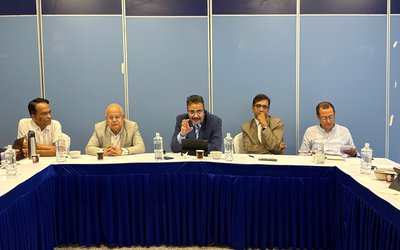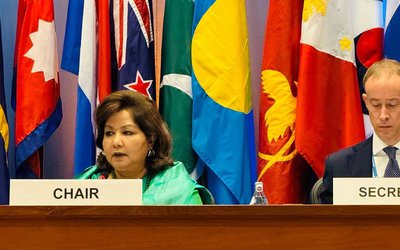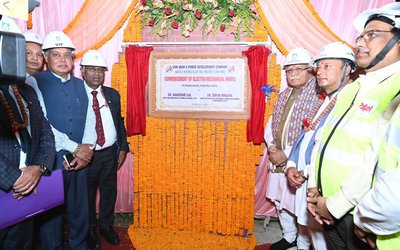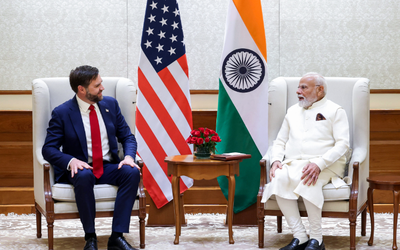
The Fourth Global Meeting of the Mountain Partnership (MP) took place in Erzurum, Turkey, on 17-20 September 2013. During the meeting, the assembly addressed: the new Mountain Partnership Strategy and Governance; mountains in the PostRio+20 and the2015 Sustainable Development Goals (SDGs); the Mountain Forum knowledge platform for sustainable mountain development; regional coordination mechanisms; and the selection of the MP Steering Committee. Thematic working groups considered how to put the Mountain Partnership into practice. Parallel regional meetings, Partnership Fairs and side events also took place.
The meeting brought together more than 100 participants representing, inter alia, governments, academia, research institutions, intergovernmental organizations and civil society. The new MP Strategy and Governance were discussed and approved and the members of the MP Steering Committee were selected. Participants also agreed on the Erzurum Conclusions.
Background of Mountain Partnership
In 1992, the heads of state or government of most of the world’s nations at the UN Conference on Environment and Development (UNCED or ‘Rio Earth Summit’) signed a plan for action, ‘Agenda 21’. Its Chapter 13 is entitled ‘Managing Fragile Ecosystems: Sustainable Mountain Development’. Sustainable Mountain Development (SMD) was not defined in Chapter 13; however, a widely-used definition is that it is “a regionally-specific process of sustainable development that concerns both mountain regions and populations living downstream or otherwise dependent on these regions in various ways” (Price and Kim, 1999).
Following the inclusion of Chapter 13 in ‘Agenda 21’, awareness and understanding of these key issues increased, particularly through a series of important global and regional meetings among scientists, development agencies and other key stakeholders. A specific outcome was the declaration of the UN General Assembly, in 1998, that 2002 would be the International Year of Mountains. In that year, many activities recognizing the diverse values of mountains and the importance of SMD took place worldwide. In addition, at the World Summit on Sustainable Development in 2002 in Johannesburg, the International Partnership for Sustainable Development in Mountain Regions was established, with essential support from the governments of Italy and Switzerland, UNEP, and FAO, the UN Lead Agency for mountains. This partnership, now known as the “Mountain Partnership” (MP), is a “Type II” Partnership, i.e., a voluntary trans-national umbrella alliance of mountain actors (governments, inter-governmental organizations, civil society and private organizations) who are committed to collaborating to advance mountain-specific goals. Like other “Type II”Partnerships, the MP is not a legal entity. FAO was tasked with hosting and implementing a Secretariat to support the MP.
Governance and Strategy
The basic elements of the current governance of the MP are defined in the document entitled
“Mountain Partnership - Organization, Membership and Governance”. This document was drafted through a consultative process, finalized in July 2004 and officially endorsed by the MP members during the second Global Meeting in September 2004 in Cuzco. The main principles expressed in the Governance chapter refer to “participation of all members, accountability, responsiveness, consensus, transparency and flexibility”. The conference of the partners is the supreme governing body of the MP to which the MP Secretariat (MPS) plays a supportive role. The MPS had a specific governance system - advisory committee - which included representatives of the donors and of other key stakeholders such as the United Nations Environment Program (UNEP), the International Centre for Integrated Mountain Development (ICIMOD), the Consortium for Sustainable Development of the Andean Eco-region (CONDESAN) and Mountain Forum. Regular meetings of the MPS advisory committee took place until 2009, when the Mountain Partnership Consortium was established by merging the advisory mechanisms of both the MPS and the Mountain Forum in an attempt to better coordinate the work that the main organizations were doing in the context of the MP. Because of a decentralization process of the MPS that had happened in 2008, representatives of the host institutions were also included in the Consortium jointly with other key organizations.
Present Scenario of Mountain Partnership
In February 2012 the Consortium decided to modify the governance structure of the MP and MPS. Over the past decade, the number of members of the MP has grown to 212 (as of May 2013), including 50 national governments, 16 inter-governmental organizations, and over 146 other organizations of great diversity in every respect. Many actions in support of SMD have been accomplished at all levels from the global - including three paragraphs in the Outcome Document of the 2012 ‘Rio+20’ UN Conference on Sustainable Development - to the local. The MPS has played an important role in creating an enabling environment for key actors to work together towards joint goals. At the same time, many other valuable joint actions have been accomplished by MP members. Nevertheless, many of the active members of the MP recognize that ten years after its establishment, it is time to redefine the MP goals and revitalize its activities. This document, which is based on the experiences and lessons learned from the last 10 years, presents the MP strategy and governance for the period 2014 to 2017.
Nepal and ICIMOD was elected from the Asia-pacific to the steering committee for four year. ICIMOD focuses its activities to the eight member countries within Hindu Kush Region. Nepal being a mountainous country has to play a critical role at the regional and international level on the issue of Sustainable Mountain Development. In Nepal many talk about the issues of mountain but in a diverted or scattered way within the country and not a single authority has been responsible to take these up seriously.

Purushotam Ghimire
Mr. Ghimire, Former Joint Secretary, Expert/Resource person of CC, DRR, SDGs, participates in the climate discussion at the national and international level. He could be contacted via his email: purughimire@yahoo.com, or gihimirep@gmail.com
- Opportunities For Synergistic Climate Response
- Oct 27, 2017
- Disaster Risk Reduction: Words And Actions
- Nov 22, 2014
- Mainstreaming Disaster In National Development
- Sep 26, 2014
- Managing Disaster Risk And Climate Change
- Sep 11, 2014
- Impact Of Disasters In Nepal
- Aug 29, 2014















